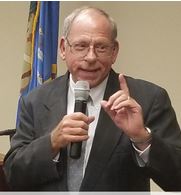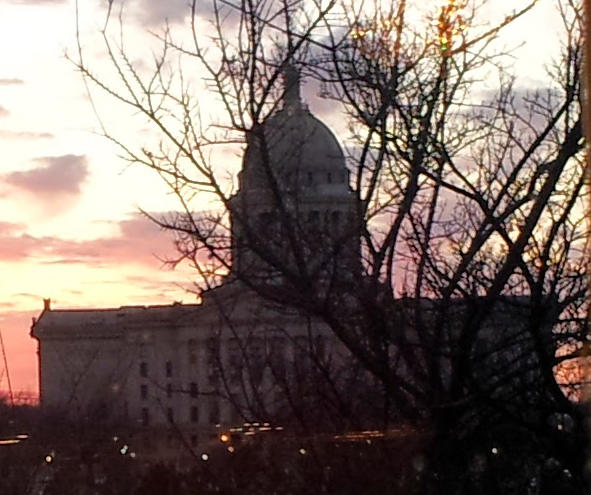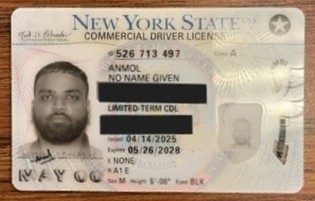Locking the Clock
I long for the time that we don’t have to change the time on our clocks. I dread these biannual time changes. Just adjusting the clocks can be a major task. While cell phones and atomic clocks take care of themselves, other clocks along with appliances such as kitchen stoves and microwave ovens must be done manually. Clocks in vehicles can be a real challenge, especially if you can’t find the car manual.
The concept of DST was first proposed by Benjamin Franklin in a 1784 satirical letter to the editor. He suggested that getting up earlier in the summer would save candle use in the evening. He even suggested ringing church bells to get people up earlier in the morning.
The federal government first implemented DST during the first World War through the Standard Time Act of 1918. The act also established the five time zones across the country. DST was resurrected during World War II. After the war, some jurisdictions continued to observe the wartime mandate. In 1966, the Uniform Time Act standardized the use of DST across the county, but allowed states to opt out and remain on Standard Time year-round.
Permanent, or year-round DST was enacted in 1974, but Oklahoma and other states petitioned the federal government to repeal it because of problems caused by it being dark until after 8 a.m. in the winter. There were complaints of children going to school in the dark and employees going to work before the sun rose. So, the permanent act was repealed in 1975.
In addition to the frustration of changing clocks, most experts agree that the time changes adversely affect people’s health, especially relative to sleep. The body’s natural circadian rhythms are disrupted by the time changes, reducing the amount of high-quality, restful sleep. This in turn decreases cardiovascular health, increases diabetes and obesity, causes mental health issues, and lowers cognitive performance. Statistics show an increase in heart attacks, strokes, and traffic accidents in the days and weeks following the time changes.
Also, as lighting has become more energy efficient, the energy savings has become negligent. In fact, any energy savings from lighting may be offset by increased air conditioning and household electronic usage resulting from people having extra daylight hours in the evening. So, the supposed main purpose is no longer valid.
In January, our own U.S. Senator James Lankford, along with Florida Senator Rick Scott, introduced the Sunshine Protection Act to officially “lock the clock” and make DST the national year-round standard. An identical bill, also authored by Senator Lankford, passed the U.S. Senate in March of 1922. However, that bill was approved by a voice vote, and later many Senators claimed they did not realize they passed it. Perhaps they suffered from lower cognitive performance as the vote occurred just after a time change. It was never taken up in the House of Representatives.
Perhaps with the change of presidential administrations and a new Congress, things may be different this time. “It is past time to get this bill to the President’s desk so we can stop the annoying twice-a-year reset of the clocks. Let’s lock the clocks,” Lankford says.
“In 2018, as Governor of Florida, I signed legislation that would allow the state to opt out of the practice of changing the time and I’ve been a leading effort in getting this done on the federal level. I’m excited to have President Trump back in the White House and fully on board to LOCK THE CLOCK so we can get this good bill passed and make this common-sense change that will simplify and benefit the lives of American families,” Senator Rick Scott said.
The new bill has bipartisan support with Senators Patty Murray (D-WA), Tommy Tuberville (R-AL), Rand Paul (R-KY), Ron Wyden (D-OR), Bill Hagerty (R-TN), Cynthia Lummis (R-WY), Ed Markey (R-MA), Sheldon Whitehouse (D-RI), Martin Heinrich (D-NM), Alex Padilla (D-CA), Brian Schatz (D-HI), Tina Smith (D-MN), and Katie Britt (R-AL) cosponsoring the legislation. The bill would apply to states who currently participate in DST, which most states observe for eight months out of the year.
Last year, Oklahoma became the 20th state to adopt “lock the clock” legislation. Senate Bill 1200 by Sen. Blake “Cowboy” Stephens (R-Grove) and House Speaker Charles McCall (R-Atoka) calls for Oklahoma to remain on DST year-round. The measure is a “trigger law” that will immediately go into effect if a federal law authorizes states to do so. It passed the Oklahoma Senate 37-9 on March 11, 2024, and the House 67-29 on April 23, 2024. It was signed into law by Gov. Kevin Stitt on April 26.
Meanwhile, state Rep. Kevin West (R-Moore) authored several bills that would send to a vote of the people a question on whether to adopt permanent Standard Time in Oklahoma, but the measures have not advanced through the legislative process. West says adopting permanent DST is a terrible idea. “We tried this in the past and had to petition the federal government to repeal it because of the problems caused by it remaining dark until after 8 a.m. in the winter.” He notes that federal law allows states to be on Standard Time year-round. Arizona, Hawaii and most U.S. territories currently do this. West said he’ll keep pushing for legislation to put the question before state voters.
So, if the federal Sunshine Protection Act is approved, Oklahoma will automatically switch to permanent Daylight Saving Time. But, will Oklahomans again complain as they did in 1974 and ask for it to be repealed?
Ron McWhirter is one of the founders of the Oklahoma Constitution newspaper and serves as the General Manager. He may be contacted at the newspaper email: okconsti@aol.com










Latest Commentary
Thursday 30th of October 2025
Thursday 30th of October 2025
Thursday 30th of October 2025
Thursday 30th of October 2025
Thursday 30th of October 2025
Thursday 30th of October 2025
Thursday 30th of October 2025
Thursday 30th of October 2025
Thursday 30th of October 2025